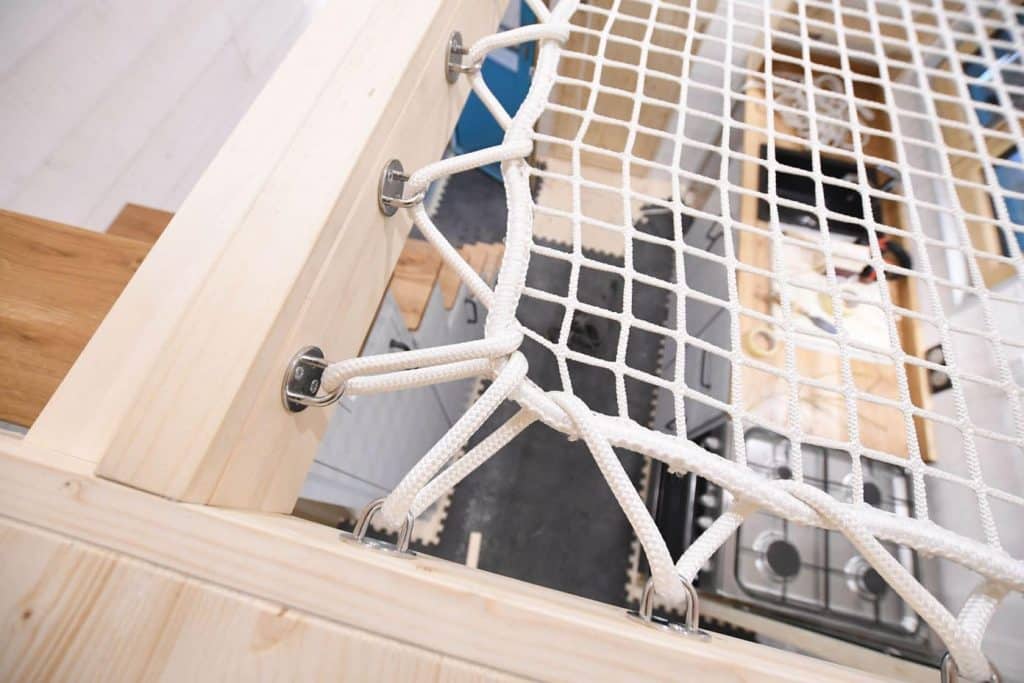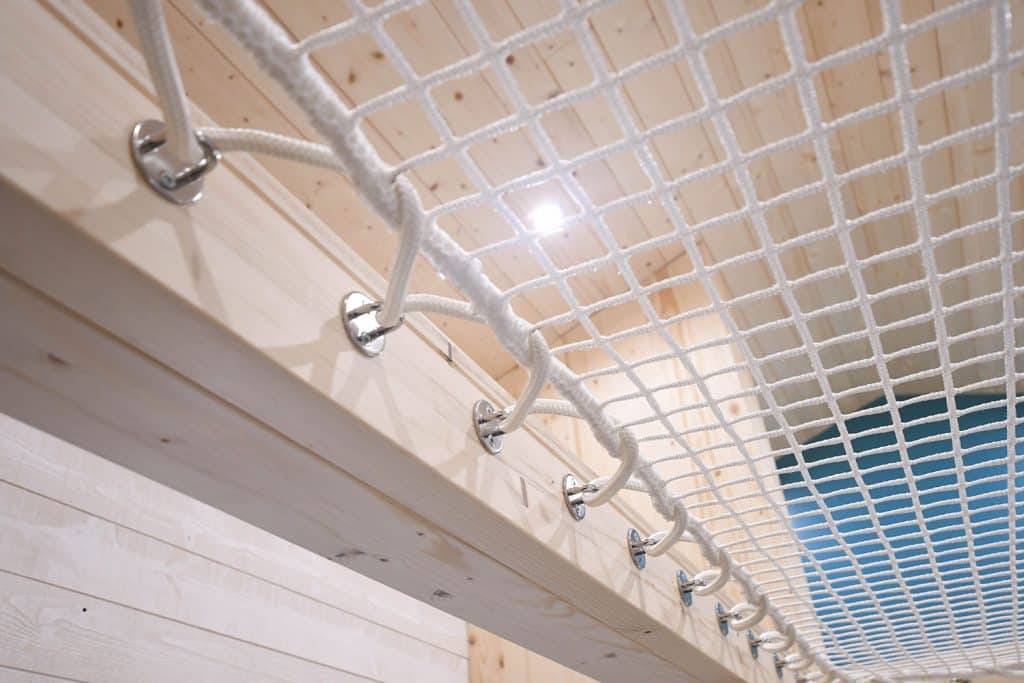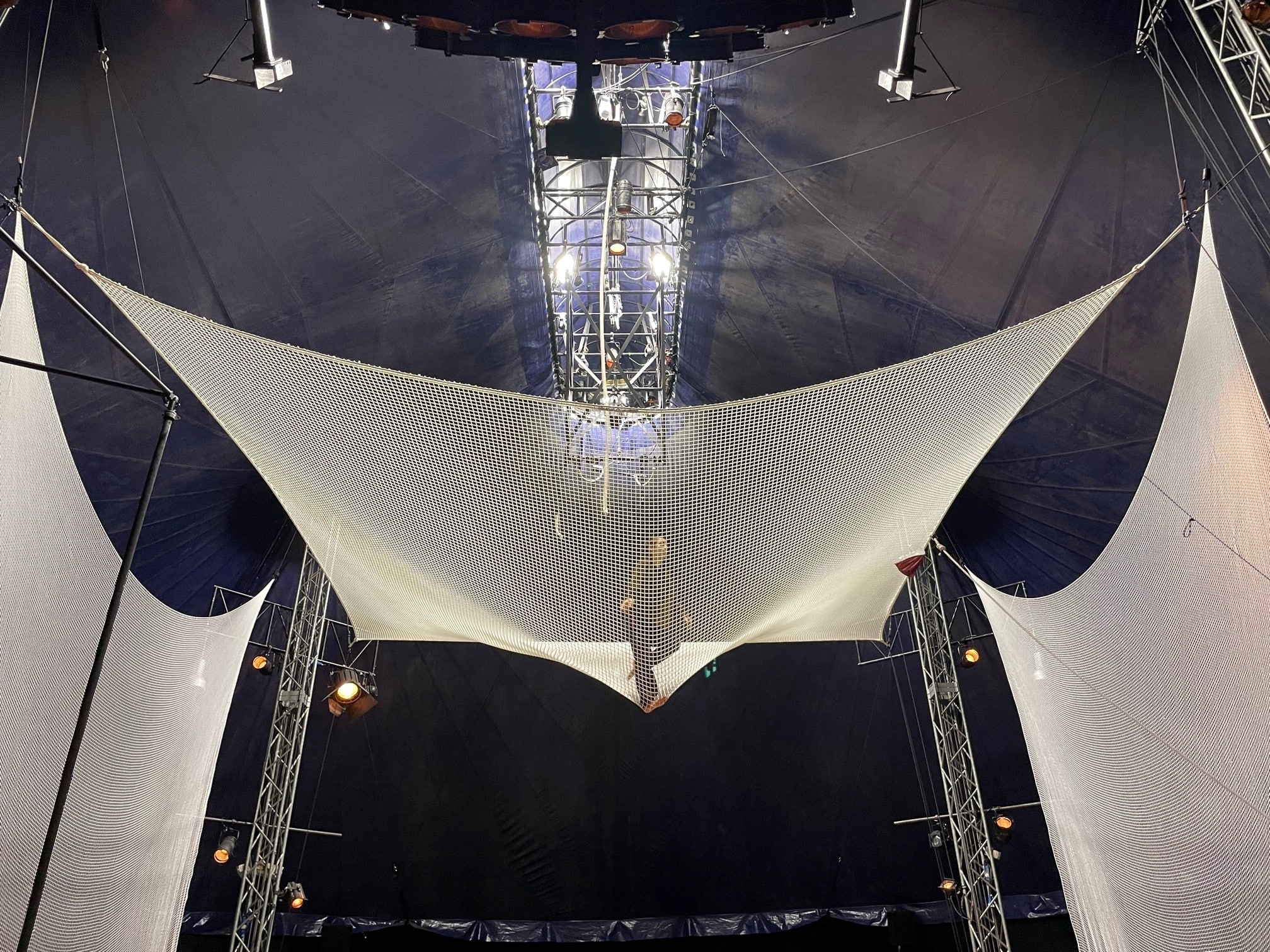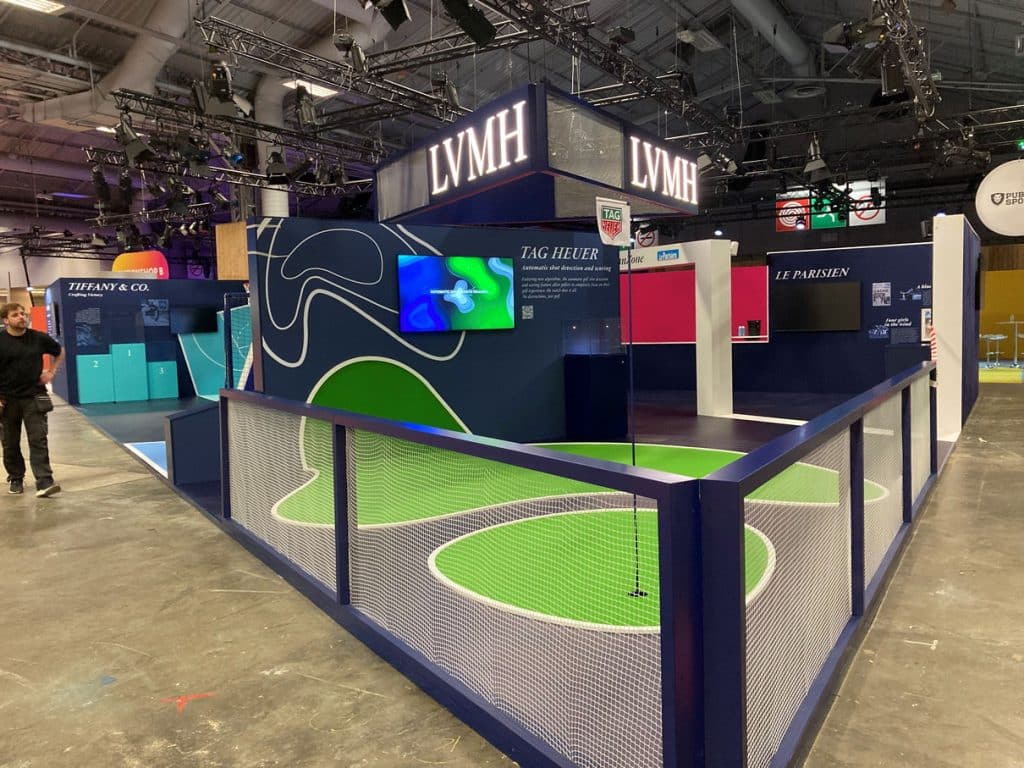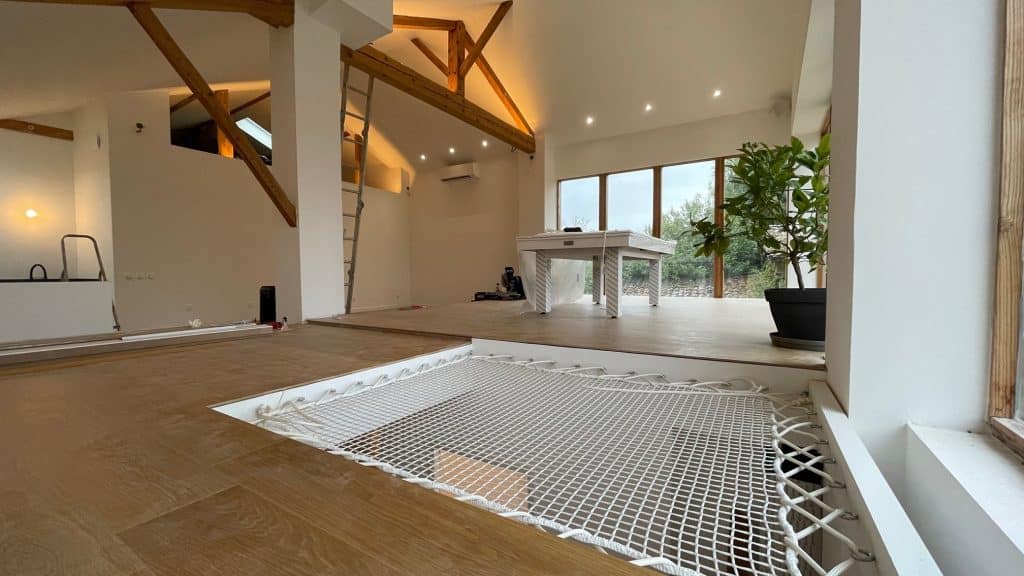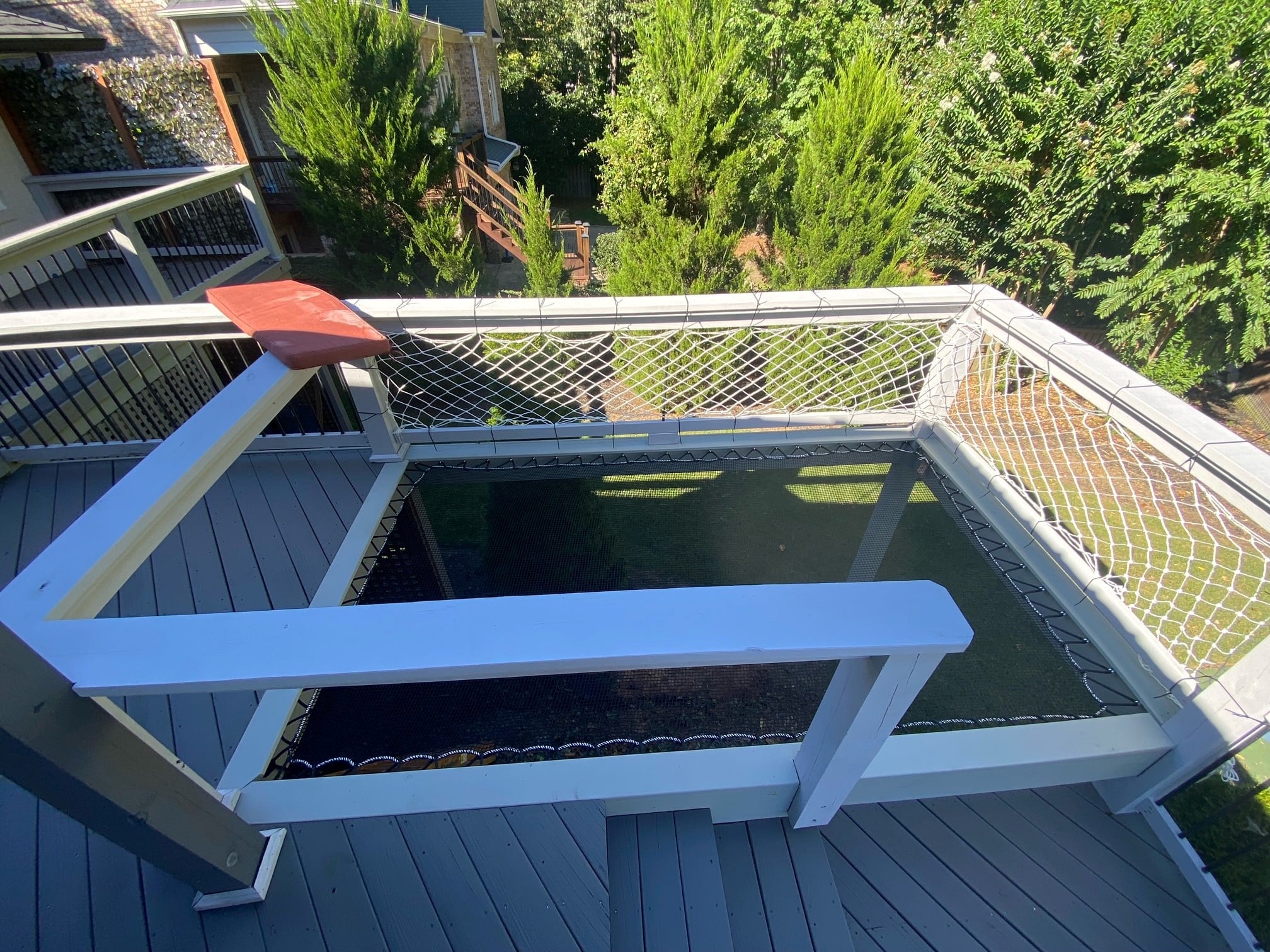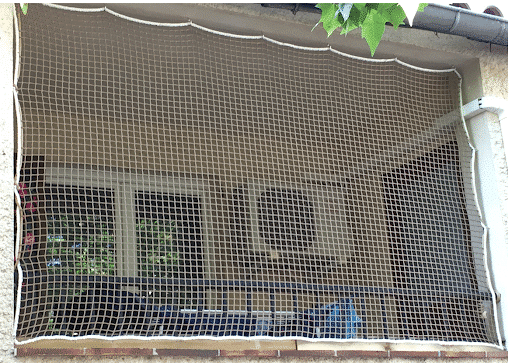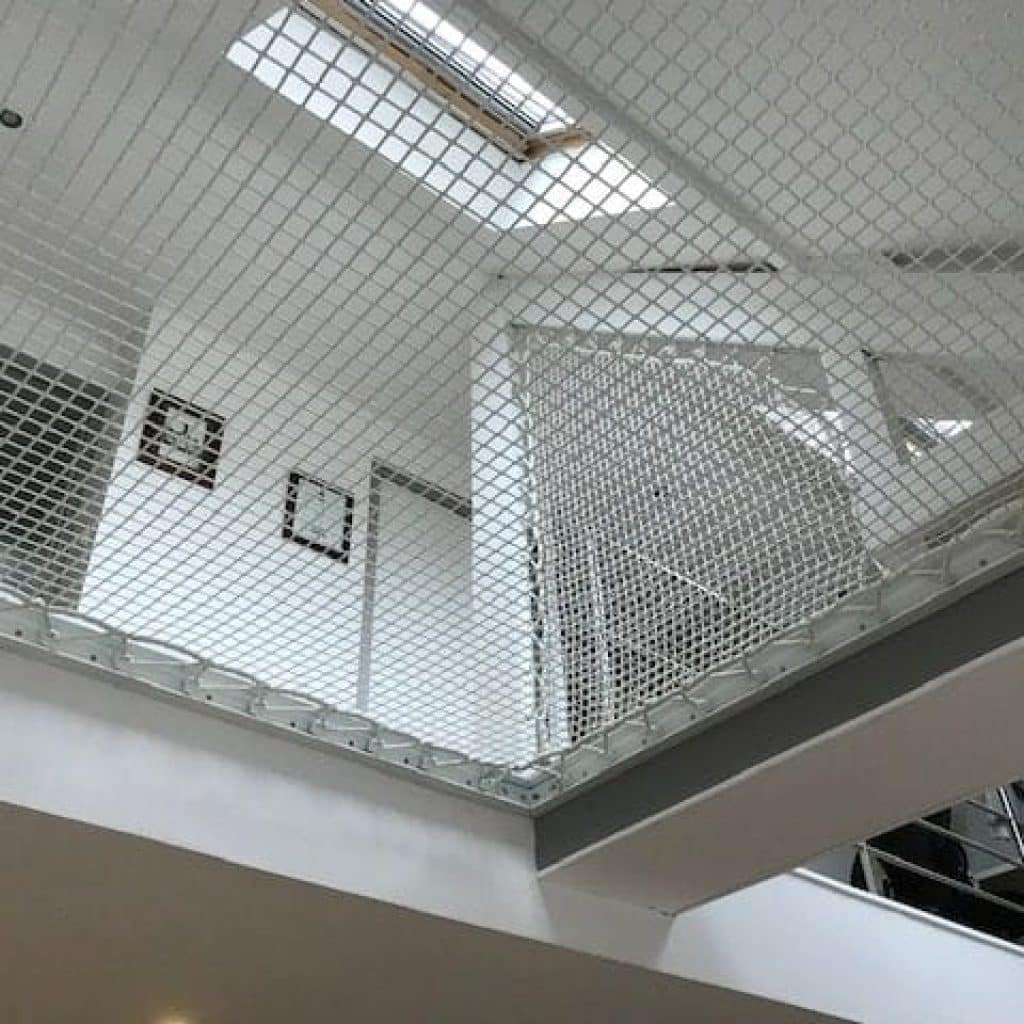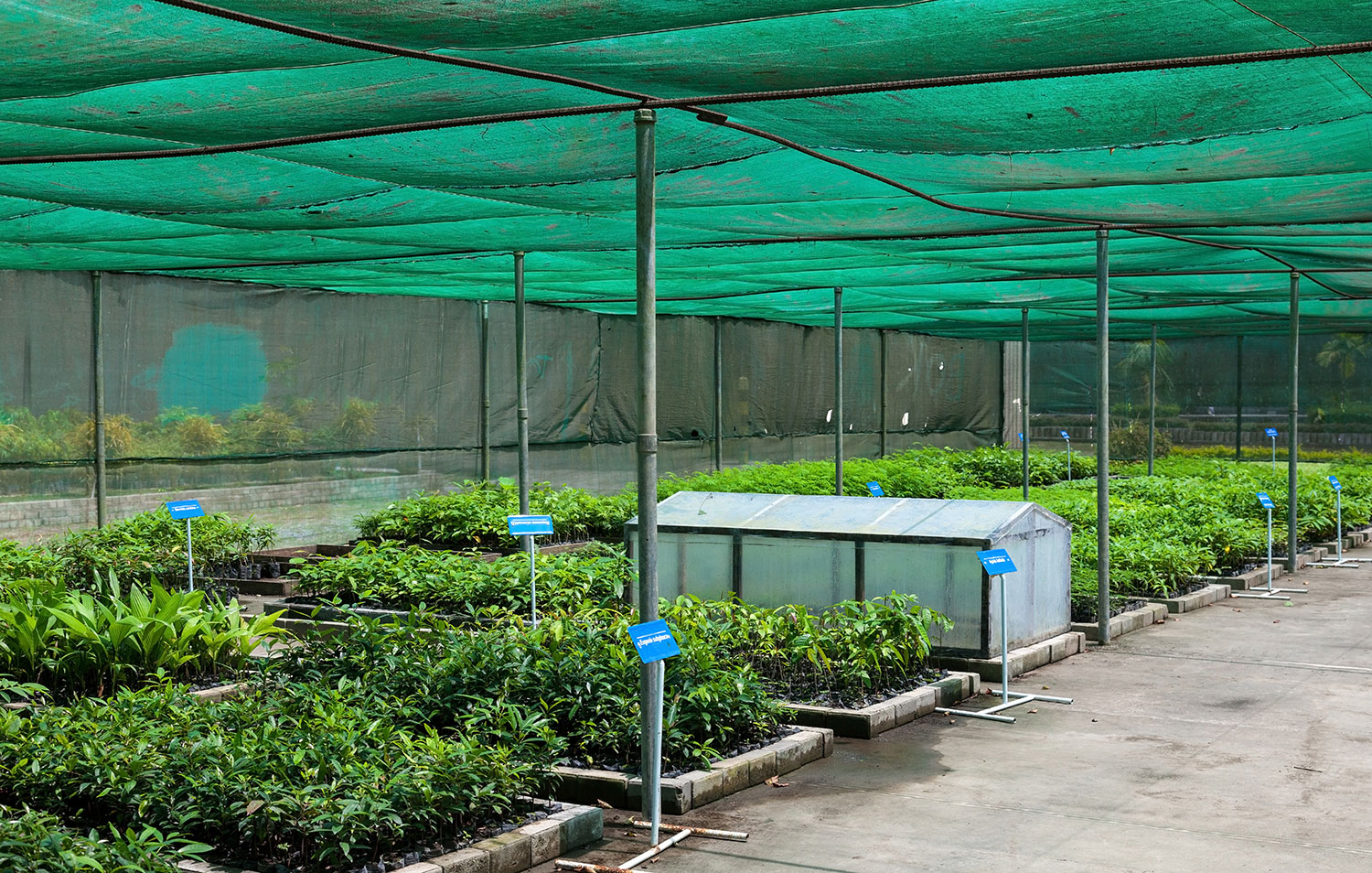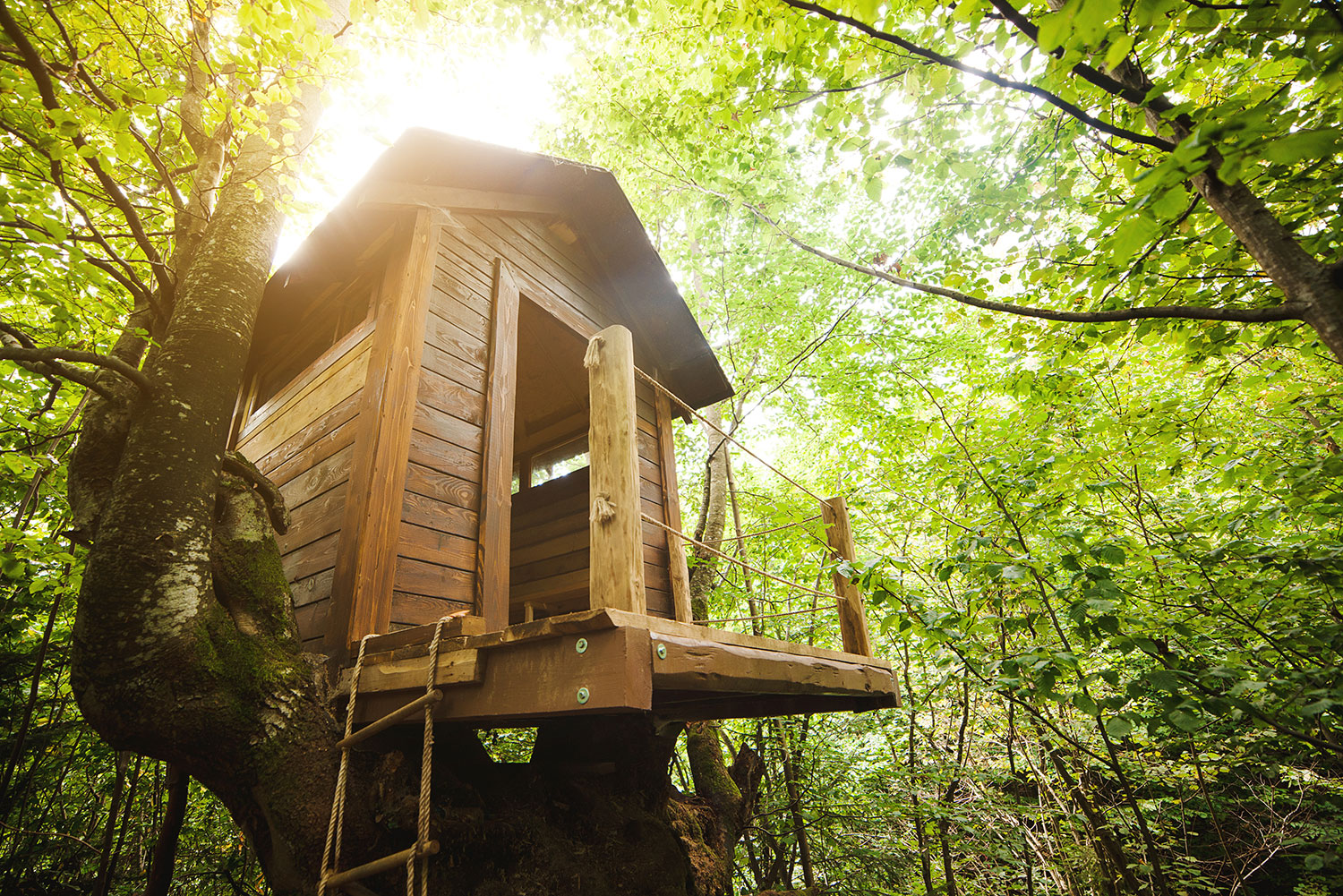5 Benefits of Netting as Balcony Guardrail
A balcony guardrail using netting involves installing a durable, tightly-woven net around the perimeter of a balcony. This net acts as a safety barrier to prevent falls and accidents, especially for children and pets. It offers an unobtrusive, aesthetically pleasing alternative to traditional metal or glass railings, providing both safety and an open view. Netting systems are customizable to fit various balcony sizes and shapes, and are designed to withstand weather conditions, ensuring longevity and minimal maintenance.
1. Safety Enhancement
Netting provides an effective barrier, preventing falls and accidents, particularly for children and pets. Its tight weave eliminates gaps, ensuring a secure environment.
2. Aesthetic Appeal
Modern netting designs can complement any architectural style, adding a sleek and contemporary look to balconies without obstructing the view.
3. Versatility
Netting can be customized to fit various balcony sizes and shapes, making it a versatile solution for different spaces and designs.
4. Durability
High-quality materials used in netting are resistant to weather and wear, ensuring long-lasting performance and minimal maintenance.
5. Easy Installation
Netting systems are relatively easy to install compared to traditional railings, offering a quick and efficient safety solution.
For more details about balcony guardrail, contact us
The Art and Science of Tensioning Rope for Netting Applications
Tensioning rope is a critical process in the construction and maintenance of netting applications, ensuring safety, durability, and functionality. From recreational nets in homes to industrial safety nets, the principles of proper tensioning are universal. This article delves into the importance of tensioning rope for netting applications, with our expert insights from industry leader FeelNets.
The Importance of Tensioning in Netting
Tensioning is the process of applying force to a rope or net to make it taut. Proper tensioning is essential in netting applications to:
Ensure Safety: Adequate tension prevents sagging and displacement, which could otherwise lead to accidents.
Enhance Durability: Well-tensioned nets can better withstand environmental stressors, such as wind and weight loads, thus lasting longer.
Maintain Aesthetic and Functional Integrity: Properly tensioned nets retain their shape and functionality, essential for both practical use and aesthetic appeal.
Techniques for Tensioning Rope in Netting
Effective tensioning involves several techniques, depending on the net's purpose and environment:
Manual Tensioning: This involves pulling the rope by hand and securing it with knots. It is often used for smaller, less critical nets.
Mechanical Tensioning: Devices such as turnbuckles, ratchets, and winches apply consistent tension, crucial for larger and more critical netting applications.
Pre-Tensioning: This method involves stretching the net before installation to remove any slack, ensuring even tension once the net is in place.
Anchoring: Properly securing the anchor points is essential to maintain tension. This involves using sturdy, reliable anchors and ensuring they are correctly positioned.
Products and Innovations from FeelNets
FeelNets offers a range of products designed for various netting applications, from industrial safety nets to decorative and functional nets for commercial use. Our products range from hammock-style nets for relaxation to intricate net installations used in modern architecture. Feelnets focuses on combining aesthetic appeal with functionality, ensuring their nets are not only beautiful but also safe and reliable through proper tensioning. Our approach emphasizes the importance of using high-quality materials and reliable tensioning techniques to ensure safety and durability.
Expert Tips for Tensioning Nets
Choose the Right Rope: The type of rope used is critical. At FeelNets, we use ropes that are specifically designed for durability and performance under tension.
Regular Maintenance: Over time, nets can lose tension. Regular checks and adjustments ensure they remain safe and functional.
Professional Installation: For critical applications, professional installation ensures that nets are correctly tensioned and secured.
Understand Load Requirements: Knowing the expected load and environmental factors helps in selecting the right tensioning method and materials.
Tensioning rope for netting applications is a crucial skill that combines safety, functionality, and aesthetics. Insights from FeelNets highlight the importance of using quality materials and proper techniques to achieve optimal tensioning. Whether for recreational, industrial, or decorative purposes, understanding and applying the principles of rope tensioning ensures the longevity and effectiveness of net installations. By following best practices and leveraging expert innovations, anyone can achieve safe and durable netting solutions.
CONTACT US FOR A CUSTOM QUOTE
Netting 101: Different usages of nylon braided netting
Nylon braided netting is versatile and used across various industries and applications due to its strength, durability, and flexibility. Here are some of the different usages:
1. Fishing and Aquaculture
Fishing Nets: Commonly used in commercial and recreational fishing for gill nets, trawl nets, and seine nets.
Fish Farming: Used for containment nets in fish farms, ensuring fish stay within designated areas.
2. Sports and Recreation
Sports Nets: Utilized in sports such as soccer, basketball, tennis, and volleyball for goal nets, backstops, and boundary nets.
Climbing Nets: Found in playgrounds and adventure parks, providing safe climbing structures for children and adults.
3. Agriculture and Horticulture
Crop Protection: Protects crops from birds and pests by covering plants and trees.
Trellis Netting: Supports climbing plants like beans, peas, and vines, aiding in their growth and maximizing space.
4. Construction and Safety
Debris Netting: Used on construction sites to catch falling debris, enhancing safety for workers and pedestrians.
Safety Nets: Provides fall protection for workers at heights, such as in building construction or maintenance work.
5. Marine and Boating
Cargo Nets: Secures cargo on boats and ships, preventing shifting and loss during transport.
Mooring Nets: Helps in the mooring of vessels and managing dockside operations.
6. Animal Management
Poultry and Livestock Enclosures: Used for creating enclosures for poultry, livestock, and other animals.
Wildlife Control: Helps in humane capture and relocation of animals, and in protecting areas from wildlife intrusion.
7. Industrial Applications
Packaging and Transport: Used for securing goods during transportation, including pallet netting.
Material Handling: Employed in factories and warehouses for handling materials safely.
8. Decorative and Artistic Uses
Theatrical and Event Production: Used for stage backdrops, props, and set designs.
Home and Garden Decor: Utilized in garden designs and as decorative nets in homes and patios.
9. Environmental and Conservation Efforts
Erosion Control: Used in environmental projects to prevent soil erosion.
Rehabilitation Nets: Helps in environmental restoration projects by supporting plants and soil structures.
10. Medical and Rehabilitation
Rehabilitation Nets: Used in physical therapy and rehabilitation for various exercises and support structures.
The adaptability of nylon braided netting makes it a crucial material in many sectors, owing to its resilience, weather resistance, and long lifespan.
CONTACT US FOR A CUSTOM QUOTE
Safety First: How to Choose the Right Netting for Catamaran
Choosing the right netting for your catamaran is crucial for safety, comfort, and performance. Here are the key factors to consider:
Material Quality
1. **Polyester**: Known for its durability and UV resistance, making it a popular choice for marine environments.
2. **PVC-Coated Nets**: These offer enhanced durability and are easier to maintain, ideal for heavy-duty use.
Mesh Size
The mesh size of your netting impacts both safety and comfort. Smaller mesh sizes are safer for pets and children, preventing them from slipping through, while larger meshes can improve ventilation and reduce wind resistance. It's essential to balance safety with practicality based on your typical use scenarios.
Load Capacity of Netting for Catamaran
Ensure your netting can handle the maximum expected load, including people, gear, and dynamic forces from waves and wind. The load capacity is a critical safety factor, especially during rough sea conditions or heavy usage periods.
UV Resistance
UV resistance is vital for netting exposed to prolonged sunlight. Materials with high UV resistance will last longer and maintain their strength and color, reducing the need for frequent replacements.
Ease of Installation
Opt for netting that is easy to install or comes with professional installation services. Proper installation is crucial to ensure the net is secure and functions as intended, preventing accidents and ensuring long-term reliability.
Custom Fit
Custom-made nets are tailored to fit your specific catamaran model, ensuring optimal safety and aesthetic appeal. Custom fits eliminate gaps and ensure the netting integrates seamlessly with your vessel's design.
Maintenance
Consider the ease of cleaning and maintenance. Marine environments can be harsh, with saltwater, sun, and other elements impacting your netting. Regular maintenance, facilitated by easy-to-clean materials, will extend the lifespan of your net and keep it looking and performing at its best.
Final Thoughts about Netting for Catamaran
Choosing the right netting for your catamaran involves balancing multiple factors, including material quality, mesh size, load capacity, UV resistance, installation ease, custom fit, and maintenance requirements. By considering these elements, you can ensure your netting provides maximum safety and durability.
For high-quality, custom-made netting solutions, we offers a range of products designed to meet your specific needs. Visit our contact page to explore our offerings and enhance the safety and comfort of your catamaran.
The Ultimate Guide to Loft Bed Hammock: Maximizing Space and Comfort
Loft bed hammock is revolutionizing the way we think about space utilization and comfort in our homes. As urban living spaces become more compact, innovative solutions like loft bed hammocks offer a unique blend of functionality and relaxation. In this guide, we'll explore the benefits of the home hammocks, their installation, and why they might be the perfect addition to your home.
What is a Loft Bed Hammock?
A loft bed hammock is a versatile and space-saving piece of furniture that combines the features of a traditional loft bed with the comfort and leisure of a hammock. Typically installed beneath a loft bed, these hammocks provide a cozy, suspended area perfect for lounging, reading, or even sleeping.
Benefits of a Loft Bed Hammock
1. Space Optimization
One of the primary advantages of a loft bed hammock is its ability to maximize space. In small apartments or dorm rooms, every square foot counts. By utilizing the area beneath a loft bed, you can create an additional seating or sleeping area without sacrificing floor space.
2. Comfort and Relaxation
Hammocks are renowned for their comfort. The gentle sway and supportive fabric make them an ideal spot for relaxation. Whether you want to unwind after a long day or enjoy a quiet afternoon with a book, a loft bed hammock provides a perfect sanctuary.
3. Aesthetic Appeal
Loft bed hammocks add a unique aesthetic to any room. Available in various colors and styles, they can complement your existing decor and add a touch of bohemian charm. Feelnets offers a wide range of customizable options to match your personal style.
4. Versatility
Beyond just being a bed or a lounge area, loft bed hammocks can serve multiple purposes. They can be a play area for children, a cozy nook for pets, or an extra sleeping spot for guests. Their versatility makes them a valuable addition to any home.
How to Install a Loft Bed Hammock
Installing a home hammock might seem daunting, but it's a straightforward process if you follow these steps:
1. Choose the Right Location
Select a sturdy loft bed frame that can support the additional weight of a hammock and its occupant. Ensure there is sufficient clearance between the hammock and the floor for safe and comfortable use.
2. Gather Your Materials
You will need:
- A durable hammock (preferably with reinforced edges)
- Sturdy hooks or anchors
- Measuring tape
- Drill (if installing anchors into the ceiling or walls)
3. Measure and Mark
Use a measuring tape to determine the optimal height and spacing for the hammock hooks. Mark the positions where the hooks will be installed, ensuring they are evenly spaced and secure.
4. Install the Hooks
If you are attaching the hooks to the bed frame, ensure they are securely fastened. For wall or ceiling installations, use a drill to create anchor points and attach the hooks firmly.
5. Hang the Loft Bed Hammock
Attach the hammock to the hooks, ensuring it is evenly balanced. Test the hammock's stability and make any necessary adjustments before use.
Why Choose a Hammock from FeelNets?
Feelnets offers high-quality nettings designed for durability and comfort. Here’s why they stand out:
Customization
Feelnets provides a variety of customization options, allowing you to choose the size, color, and material that best fits your needs. This level of personalization ensures that your home hammock will perfectly integrate into your space.
Quality Materials
Both brands use premium materials that ensure longevity and safety. Whether you need a hammock for heavy use or one that adds a decorative touch, you can trust the quality of these products.
Expert Guidance
Feelnets offers excellent customer support and detailed installation guides, making the process hassle-free even for beginners.
Loft bed hammock is an excellent solution for anyone looking to maximize space while adding a comfortable and stylish element to their home. With the right installation and high-quality options from Feelnets, you can transform any room into a multifunctional haven of relaxation. Embrace the comfort and versatility of home hammocks and elevate your living space today.
Why Netting Should Be Used as Balcony Safety Rails?
Balcony safety is a critical concern for homeowners, especially those with young children or pets. Traditional railings can leave dangerous gaps that increase the risk of falls and injuries. Netting provides a continuous barrier, effectively eliminating these hazards and offering a secure environment for your loved ones.
Netting significantly enhances safety by covering the gaps in traditional balcony railings, preventing children and pets from slipping through or getting stuck. High-quality netting is designed to withstand significant force, ensuring it remains intact even under pressure. Its versatility allows it to adapt to any balcony size or shape, making it suitable for various residential and commercial properties. Whether you have a small apartment balcony or a large terrace, netting can be customized to meet your specific needs.
In addition to its practical benefits, netting can also enhance the aesthetic appeal of your balcony. Modern netting solutions, such as those offered by Feelnets, come in various colors and styles that complement your existing décor. Designed to be discreet yet effective, this netting maintains the visual appeal of your balcony while providing robust safety features.
Installing netting as balcony safety rails is a straightforward process that doesn't require extensive modifications to your existing structure. The netting can be securely attached to the railing or walls using simple tools and hardware. Moreover, netting is easy to maintain and clean, ensuring it remains effective and attractive over time. Compared to other safety modifications, netting is a cost-effective solution that provides excellent value for money. It offers a durable, long-lasting barrier without the need for expensive installations or frequent replacements, making it an economical choice for homeowners looking to enhance balcony safety on a budget.
When selecting netting for your balcony, consider factors such as material, mesh size, customization options, and safety standards. Opt for high-quality, UV-resistant materials like high-density polyethylene (HDPE) or nylon, which are durable and can withstand various weather conditions. Ensure the mesh size is small enough to prevent children or pets from passing through but large enough to allow visibility and airflow. Look for netting that can be customized to fit your balcony dimensions, such as the tailored solutions offered by Feelnets, and choose netting that meets safety standards and regulations to ensure optimal protection.
Using netting as balcony safety rails effectively enhances your home's safety while maintaining aesthetic appeal. Netting offers enhanced safety, versatility, easy installation, low maintenance, and cost-effectiveness. By choosing high-quality netting, you can create a secure environment, giving you peace of mind and allowing you to enjoy your balcony without worry. Invest in balcony netting today and experience the perfect blend of safety and style.
Contact us to receive your custom quote!
The rising popularity of the ceiling hammock
Several factors that resonate with modern lifestyles and design preferences can be attributed for the rising popularity of the ceiling hammock. In an era where urban living spaces are becoming increasingly compact, maximizing every square foot is essential. Ceiling hammocks offer a space-saving solution by utilizing underutilized vertical space, making them particularly appealing for small apartments, tiny homes, and other cozy living environments.
The trend towards minimalism and simplicity in interior design has led to a growing appreciation for clean lines, uncluttered spaces, and multifunctional furniture. Ceiling hammocks embody these principles, providing a streamlined seating or lounging option that adds visual interest without overwhelming the room.
As people seek refuge from the stresses of modern life, there's a growing emphasis on creating serene and tranquil living spaces that promote relaxation and well-being. Ceiling hammocks offer a unique opportunity to incorporate elements of nature-inspired design into the home, with their gentle swaying motion and cocoon-like comfort evoking a sense of calm and serenity.
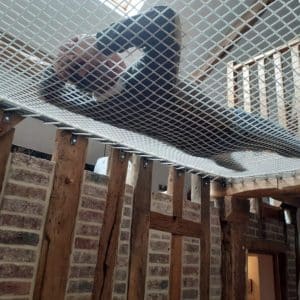
Ceiling hammocks are incredibly versatile, serving multiple functions beyond traditional seating or lounging. They can be installed in various rooms throughout the home, from living rooms and bedrooms to sunrooms and outdoor spaces, adapting to different uses and needs throughout the day.
For those who enjoy hands-on projects and creative DIY endeavors, installing a ceiling hammock can be a rewarding and satisfying experience. With the availability of DIY tutorials, hammock kits, and mounting hardware, homeowners can take on the challenge of installing a ceiling hammock themselves, adding a personal touch to their living space.
Overall, the growing trend of ceiling hammocks reflects a desire for innovative, space-saving solutions that prioritize comfort, relaxation, and personal expression in home design. As more people embrace the benefits of vertical living and minimalist aesthetics, ceiling hammocks are likely to continue gaining popularity as a versatile and stylish addition to modern interiors.
CONTACT US NOW TO RECEIVE YOUR CUSTOM QUOTE
Exploring the Versatile Uses of an Outdoor Net
Outdoor nets are not just for sports anymore. While they certainly excel in providing boundaries for games like soccer, tennis, and volleyball, their versatility extends far beyond the athletic field. From practical applications in gardening and safety to creative uses in design and decor, the outdoor net has become an essential tool for enhancing both functionality and aesthetics in various settings. Let's explore the diverse uses of outdoor nets:
Sports and Recreation
Soccer Goals: Outdoor nets serve as essential components of soccer goals, providing a boundary for the game and catching the ball when a goal is scored. Tennis Court Dividers: In tennis, nets divide the court and play a crucial role in defining the boundaries of the game, facilitating fair play and competition. Volleyball Nets: For beach or backyard volleyball, nets create a barrier between teams, allowing for rallies and spikes while preventing the ball from straying too far.
Safety and Protection
Pool Safety: Nets can be installed over swimming pools to prevent accidents by catching falling debris, leaves, or even small animals. Balcony Guardrails: In high-rise buildings or homes with elevated balconies, nets provide a safety barrier, especially for children and pets, reducing the risk of falls.
Gardening and Agriculture
Plant Support:Nets offer support for climbing plants such as beans, peas, and cucumbers, allowing them to grow vertically and maximizing garden space. Crop Protection: Nets act as barriers to keep pests such as birds, insects, and rodents away from crops, reducing the need for chemical pesticides.
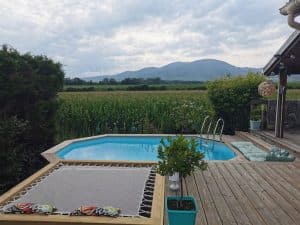
Privacy Screens: Nets can be used as decorative privacy screens on patios, decks, or pergolas, creating a sense of seclusion while still allowing airflow and natural light. Shade Structures: When stretched over a frame or pergola, nets provide shade from the sun, creating a cool and comfortable outdoor living space. Artistic Installations: In landscape design, nets can be incorporated as artistic elements, such as sculptural installations or floating canopies, adding visual interest and enhancing the overall aesthetic of the environment.
Adventure and Exploration
Climbing Nets: In adventure parks or playgrounds, nets are used as climbing structures, encouraging physical activity and exploration while ensuring safety. Treehouses and Hammocks: Nets can be suspended between trees to create elevated platforms for treehouses or hammocks, offering a unique and relaxing outdoor experience.
Environmental and Conservation
Animal Bridges: Nets are sometimes used as bridges or crossings for wildlife, helping animals navigate roads, rivers, or other obstacles in their natural habitats. Erosion Control: In landscaping and environmental restoration projects, nets can be used to stabilize soil and prevent erosion, especially on slopes or embankments.
From sports to safety, gardening to design, and adventure to conservation, outdoor nets have evolved into versatile tools with a wide range of practical and creative uses. As we continue to innovate and explore new possibilities, outdoor nets will undoubtedly remain indispensable elements of outdoor living, enhancing our experiences and interactions with the natural world.
CONTACT US NOW TO RECEIVE YOUR OUTDOOR NET CUSTOM QUOTE
Revitalize Your Space: Best Cheap Ideas for Home Renovations
Why a suspended loft net is a brilliant and one of the best cheap ideas for home renovation?
When it comes to home renovations, finding cost-effective solutions that maximize space and style is key. Among the plethora of options available, a suspended loft net stands out as one of the best cheap ideas for transforming your living space. Here's why:
Maximizes Vertical Space
In many homes, space is at a premium, especially in urban areas where square footage comes at a premium. A suspended loft net ingeniously utilizes vertical space, effectively doubling the usable area without the need for expensive construction work. By installing a loft net in high-ceilinged rooms, you can create additional storage, lounging, or sleeping space, making the most of every inch of your home.
Affordable Alternative to Traditional Loft Conversions
Traditional loft conversions involve significant construction costs, including structural alterations, insulation, and finishing work. In contrast, a suspended loft net offers a budget-friendly alternative that achieves a similar effect without the hefty price tag. With minimal materials and simple installation, you can achieve the look and functionality of a loft space at a fraction of the cost.
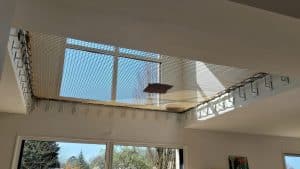
One of the greatest advantages of a suspended loft net is its versatility. Unlike fixed structures, such as built-in lofts or mezzanines, a loft net can be easily adjusted or removed to suit changing needs and preferences. Whether you're looking to create extra storage in the bedroom, a cozy reading nook in the living room, or a play area in the kids' room, a suspended loft net can adapt to virtually any space and purpose.
Add Visual Interest and Unique Appeal
Beyond its practical benefits, a suspended loft net adds a distinctive architectural element to your home. The open, airy design creates a sense of spaciousness and lightness, enhancing the overall ambiance of the room. Additionally, the visual impact of a loft net can be further accentuated by choosing high-quality materials and stylish finishes that complement your existing decor, elevating the aesthetic appeal of your living space.
DIY-Friendly Installation
Installing a suspended loft net is a relatively straightforward DIY project that can be completed with basic tools and skills. Many loft net kits come with all the necessary hardware and instructions, making it accessible to homeowners of all experience levels. By taking the DIY route, you not only save on labor costs but also have the satisfaction of knowing that you've contributed to the transformation of your home.
Creates a Unique Design Feature
A suspended loft net is not just a practical addition to your home; it's also a conversation starter and a design feature that sets your space apart. Guests will be intrigued by the innovative use of space and the modern, unconventional aesthetic of the loft net. Whether you're entertaining friends or hosting family gatherings, your suspended loft net is sure to be a focal point that sparks curiosity and admiration.
In conclusion, a suspended loft net offers a winning combination of affordability, versatility, and visual appeal, making it one of the best cheap ideas for home renovations. Whether you're looking to maximize space in a small apartment or add a touch of modern flair to a larger home, a loft net delivers on both practicality and style without breaking the bank. So why wait? Elevate your living space with a suspended loft net and enjoy the benefits of a smarter, more stylish home.
Contact us now to receive your custom quote
Why Custom Net is a must on your Tree House Supplies List?
A custom net serves as an excellent addition to a tree house supplies, offering multifaceted benefits that enhance its functionality and appeal.
The appeal of a tree house lies in its unique blend of natural charm, adventure, and escapism. It offers a sanctuary elevated among the branches, providing a sense of privacy and seclusion while still being immersed in the beauty of nature. For children, a tree house represents a magical realm where imagination can roam freely, fostering creativity and endless opportunities for play. It's a place where they can create their own adventures, whether it's pretending to be pirates on a high-seas voyage or explorers discovering hidden treasures in the forest. Even for adults, a tree house evokes a sense of nostalgia for simpler times, reconnecting them with the carefree joys of childhood and offering a peaceful retreat from the stresses of everyday life.
Beyond its whimsical appeal, a tree house also serves as a symbol of sustainability and harmony with the environment, showcasing the possibility of living in harmony with nature rather than dominating it. Whether it's nestled in the branches of a towering oak or perched on stilts above a babbling brook, a tree house captivates the imagination and beckons adventurers of all ages to experience its enchanting allure.
Ideal for optimizing space in compact tree house designs, custom nets provide additional elevated areas for lounging, sleeping, or storage without sacrificing valuable floor space. Their versatility allows for customization to fit various layouts and preferences, while their comfortable and cozy mesh construction ensures a pleasant environment for relaxation.
Safety is paramount, as loftnets are designed with sturdy construction and secure attachment points, providing stability and support for occupants. Beyond functionality, loftnets contribute to the aesthetic appeal of a tree house, blending seamlessly with the natural surroundings and adding visual interest. Easy installation further underscores their value, enabling straightforward attachment to the tree house structure.
Overall, a custom net represents a must on your tree house supplies list, combining space optimization, versatility, comfort, safety, aesthetic appeal, and ease of installation to enhance the tree house experience.
CONTACT US TODAY TO RECEIVE YOUR CUSTOM QUOTE



